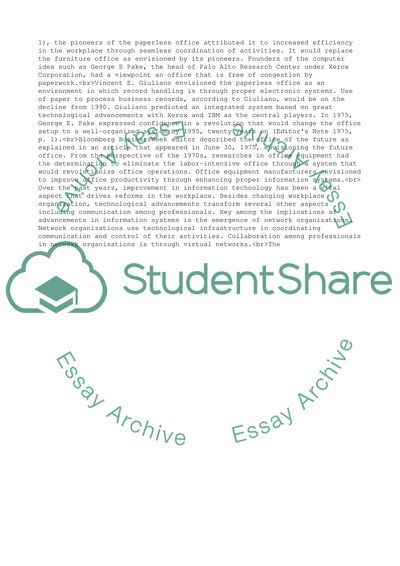Cite this document
(The paperless office will arrive at the same time as the paperless Essay - 1, n.d.)
The paperless office will arrive at the same time as the paperless Essay - 1. https://studentshare.org/business/1853744-the-paperless-office-will-arrive-at-the-same-time-as-the-paperless-toilet-critically-discuss-if-technology-has-revolutionised-the-way-we-work-using-two-concepts-from-the-module-drawing-on-your-analysis-identify-what-are-the-practical-implications
The paperless office will arrive at the same time as the paperless Essay - 1. https://studentshare.org/business/1853744-the-paperless-office-will-arrive-at-the-same-time-as-the-paperless-toilet-critically-discuss-if-technology-has-revolutionised-the-way-we-work-using-two-concepts-from-the-module-drawing-on-your-analysis-identify-what-are-the-practical-implications
(The Paperless Office Will Arrive at the Same Time As the Paperless Essay - 1)
The Paperless Office Will Arrive at the Same Time As the Paperless Essay - 1. https://studentshare.org/business/1853744-the-paperless-office-will-arrive-at-the-same-time-as-the-paperless-toilet-critically-discuss-if-technology-has-revolutionised-the-way-we-work-using-two-concepts-from-the-module-drawing-on-your-analysis-identify-what-are-the-practical-implications.
The Paperless Office Will Arrive at the Same Time As the Paperless Essay - 1. https://studentshare.org/business/1853744-the-paperless-office-will-arrive-at-the-same-time-as-the-paperless-toilet-critically-discuss-if-technology-has-revolutionised-the-way-we-work-using-two-concepts-from-the-module-drawing-on-your-analysis-identify-what-are-the-practical-implications.
“The Paperless Office Will Arrive at the Same Time As the Paperless Essay - 1”. https://studentshare.org/business/1853744-the-paperless-office-will-arrive-at-the-same-time-as-the-paperless-toilet-critically-discuss-if-technology-has-revolutionised-the-way-we-work-using-two-concepts-from-the-module-drawing-on-your-analysis-identify-what-are-the-practical-implications.


